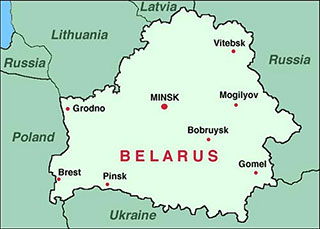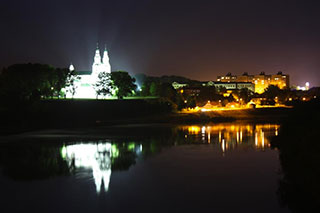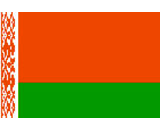
|



The territory of Belarus is slightly larger than France and slightly smaller than Kansas. Belarus is landlocked; its borders include Russia, Ukraine, Poland, Lithuania, and Latvia. Belarus consists of six oblasts (provinces) which are Brest, Gomel, Grodno, Mogilev, Minsk and Vitebsk. The capital is Minsk with a population of two million people. Belarus when translated means “White Russia.”
Most of the topography of Belarus consists mainly of steppes (plains and plateaus) and large marshes. More than a third of the territory is cover with forests. The country of Belarus is considered to have 11,000 lakes and 20,000 small rivers and creeks. Three major rivers run through the country: the Neman, Pripyat and Dnieper.
According to the constitution, the official language of Belarus is Russian, but the Belarusian language can be heard in some small towns and villages. Many of the signs on the city streets, as well as the highways, still retain the Belarusian language.
Belarus is a presidential republic, governed by the president and the National Assembly. The term for each presidency is five years. Under the constitution (1994), the president could serve for only two terms as president, but a change in the constitution was made in 2004 to eliminate term limits. Alexander Lukashenko has been the president of Belarus since 1994. The National Assembly is a bicameral parliament, which comprises the 110 member House of Representatives (lower house) and the 64 member Council of the Republic (upper house).
 Belarus and Russia have been close trading partners and diplomatic allies since the disbanding of the Soviet Union. Belarus is dependent on Russia for imports of raw materials and for its export market. The union of Russia and Belarus was established in a series of treaties that called for monetary union, equal rights and single citizenship, as well as a common foreign and defense policy. There now exists an open border between Belarus and Russia; therefore the citizens of each country can travel back and forth without any stipulations.
Belarus and Russia have been close trading partners and diplomatic allies since the disbanding of the Soviet Union. Belarus is dependent on Russia for imports of raw materials and for its export market. The union of Russia and Belarus was established in a series of treaties that called for monetary union, equal rights and single citizenship, as well as a common foreign and defense policy. There now exists an open border between Belarus and Russia; therefore the citizens of each country can travel back and forth without any stipulations.
Religious persuasion in Belarus consists of Eastern (Russian) Orthodox at 82%, Roman Catholicism at 12% and Protestant at 1%. Less than one percent would be of Jewish and Muslim faiths. While the freedom of worship is granted in the constitution, religious organizations deemed harmful to the government or social order can be prohibited. The first translation of the Bible into the Belarusian language was accomplished from 1517 to 1519 by the first Belarusian printer, Francisk Skorina (Skaryna).
Slavic Missionary Service officially has been working in Belarus since their independence. When the Soviet Union disbanded, SMS specifically started working with the Christian leadership in Belarus to evangelize areas where the Gospel story was never heard. (Belarus is the homeland of the former director of SMS, Alex Leonovich.) Choosing national workers, who would become SMS missionaries, first occurred in the country of Belarus. Funds were also designated to build new churches, especially in areas where no evangelical buildings existed. SMS considers it a privilege to work and fellowship together with the believers in Belarus, as well as the leadership of the Belarus Baptist Union.

Belarus covers one time zone. The country is sev- en hours ahead of East- ern Standard Time (EST) in the United States.

The currency is the Be- larusian ruble. One dol- lar equals 20,000 Bela- rusian rubles.





